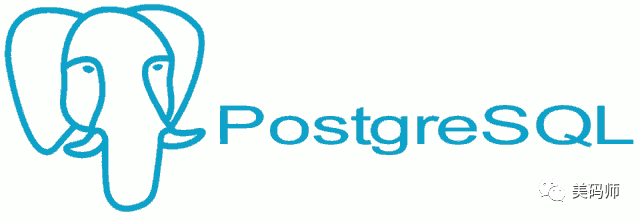SpringBoot 整合 PostGreSQL
一、PostGreSQL简介
PostGreSQL是一个功能强大的开源对象关系数据库管理系统(ORDBMS),号称
世界上最先进的开源关系型数据库。
经过长达15年以上的积极开发和不断改进,PostGreSQL已在可靠性、稳定性、数据一致性等获得了很大的提升。
对比时下最流行的 MySQL 来说,PostGreSQL 拥有更灵活,更高度兼容标准的一些特性。 此外,PostGreSQL基于MIT开源协议,其开放性极高,这也是其成为各个云计算大T 主要的RDS数据库的根本原因。

从DBEngine的排名上看,PostGreSQL排名第四,且保持着高速的增长趋势,非常值得关注。 这篇文章,以整合SpringBoot 为例,讲解如何在常规的 Web项目中使用 PostGreSQL。
二、关于 SpringDataJPA
JPA 是指 Java Persistence API
,即 Java 的持久化规范,一开始是作为 JSR-220 的一部分。 JPA 的提出,主要是为了简化 Java EE 和 Java SE 应用开发工作,统一当时的一些不同的 ORM 技术。 一般来说,规范只是定义了一套运作的规则,也就是接口,而像我们所熟知的Hibernate 则是 JPA 的一个实现(Provider)。
JPA 定义了什么,大致有:
要体验 JPA 的魅力,可以从Spring Data JPA 开始。

SpringDataJPA
是 SpringFramework 对 JPA 的一套封装,主要呢,还是为了简化数据持久层的开发。 比如:
基本上,SpringDataJPA 几乎已经成为 Java Web 持久层的必选组件。更多一些细节可以参考官方文档:
https://docs.spring.io/spring-data/jpa/docs/1.11.0.RELEASE/reference/html
接下来的篇幅,将演示 JPA 与 PostGreSQL 的整合实例。
三、整合 PostGreSQL
这里假定你已经安装好数据库,并已经创建好一个 SpringBoot 项目,
接下来需添加依赖:
A. 依赖包
<dependency>
<groupId>org.springframework.boot</groupId>
<artifactId>spring-boot-starter-data-jpa</artifactId>
<version>${spring-boot.version}</version>
</dependency>
<dependency>
<groupId>org.postgresql</groupId>
<artifactId>postgresql</artifactId>
<scope>runtime</scope>
</dependency>
通过
spring-boot-stater-data-jpa
,可以间接引入
spring-data-jpa
的配套版本;
为了使用 PostGreSQL,则需要引入
org.postgresql.postgresql
驱动包。
B. 配置文件
编辑
application.properties
,如下:
## 数据源配置 (DataSourceAutoConfiguration & DataSourceProperties)
spring.datasource.url=jdbc:postgresql://localhost:5432/appdb
spring.datasource.username=appuser
spring.datasource.password=appuser
# Hibernate 原语
spring.jpa.properties.hibernate.dialect = org.hibernate.dialect.PostgreSQLDialect
# DDL 级别 (create, create-drop, validate, update)
spring.jpa.hibernate.ddl-auto = update
其中,
spring.jpa.hibernate.ddl-auto
指定为 update,这样框架会自动帮我们创建或更新表结构。
C. 模型定义
我们以书籍信息来作为实例,一本书会有标题、类型、作者等属性,对应于表的各个字段。
这里为了演示多对一的关联,我们还会定义一个Author(作者信息)实体,书籍和实体通过一个外键(author_id)关联。
Book 类
@Entity
@Table(name = "book")
public class Book extends AuditModel{
@Id
@GeneratedValue(strategy=GenerationType.IDENTITY)
private Long id;
@NotBlank
@Size(min = 1, max = 50)
private String type;
@NotBlank
@Size(min = 3, max = 100)
private String title;
@Column(columnDefinition = "text")
private String description;
@Column(name = "fav_count")
private int favCount;
@ManyToOne(fetch = FetchType.LAZY, optional = false)
@JoinColumn(name = "author_id", nullable = false)
private Author author;
//省略 get/set
这里,我们用了一系列的注解,比如
@Table、@Column
分别对应了数据库的表、列。
@GeneratedValue
用于指定ID主键的生成方式,
GenerationType.IDENTITY
指采用数据库原生的自增方式, 对应到 PostGreSQL则会自动采用 BigSerial 做自增类型(匹配Long 类型)
@ManyToOne
描述了一个多对一的关系,这里声明了其关联的"作者“实体,LAZY 方式指的是当执行属性访问时才真正去数据库查询数据;
@JoinColumn
在这里配合使用,用于指定其关联的一个外键。
Book 实体的属性:
|
属性
|
描述
|
|
id
|
书籍编号
|
|
type
|
书籍分类
|
|
title
|
书籍标题
|
|
description
|
书籍描述
|
|
favCount
|
收藏数
|
|
author
|
作者
|
Author信息
@Entity
@Table(name = "author")
public class Author extends AuditModel{
@Id
@GeneratedValue(strategy=GenerationType.IDENTITY)
private Long id;
@NotBlank
@Size(min = 1, max = 100)
private String name;
@Size(max = 400)
private String hometown;
审计模型
注意到两个实体都继承了AuditModel这个类,这个基础类实现了"审计"的功能。
审计,是指对数据的创建、变更等生命周期进行审阅的一种机制, 通常审计的属性包括 创建时间、修改时间、创建人、修改人等信息
AuditModel
的定义如下所示:
@MappedSuperclass
@EntityListeners(AuditingEntityListener.class)
public abstract class AuditModel implements Serializable {
@Temporal(TemporalType.TIMESTAMP)
@Column(name = "created_at", nullable = false, updatable = false)
@CreatedDate
private Date createdAt;
@Temporal(TemporalType.TIMESTAMP)
@Column(name = "updated_at", nullable = false)
@LastModifiedDate
private Date updatedAt;
上面的审计实体包含了
createAt、updateAt
两个日期类型字段,
@CreatedDate、@LastModifiedDate
分别对应了各自的语义,还是比较容易理解的。
@Temporal 则用于声明日期类型对应的格式,如TIMESTAMP会对应
yyyy-MM-dd HH:mm:ss
的格式,而这个也会被体现到DDL中。
@MappedSuperClass 是必须的,目的是为了让子类定义的表能拥有继承的字段(列)
审计功能的“魔力”在于,添加了这些继承字段之后,对象在创建、更新时会自动刷新这几个字段,这些是由框架完成的,应用并不需要关心。
为了让审计功能生效,需要为AuditModel 添加
@EntityListeners(AuditingEntityListener.class)
声明,同时还应该为SpringBoot 应用声明启用审计:
@EnableJpaAuditing
@SpringBootApplication
public class BootJpa {
...
D. 持久层
持久层基本是继承于 JpaRepository或CrudRepository的接口。 如下面的代码:
AuthorRepository
@Repository
public interface AuthorRepository extends JpaRepository<Author, Long> {
}
BookRepository
@Repository
public interface BookRepository extends JpaRepository<Book, Long>{
List<Book> findByType(String type, Pageable request);
@Transactional
@Modifying
@Query("update Book b set b.favCount = b.favCount + ?2 where b.id = ?1")
int incrFavCount(Long id, int fav);
}
findByType
实现的是按照 类型(type) 进行查询,这个方法将会被自动转换为一个JPQL查询语句。
而且,SpringDataJPA 已经可以支持大部分常用场景,可以参考这里
incrFavCount
实现了收藏数的变更,除了使用 @Query 声明了一个update 语句之外,@Modify用于标记这是一个
“产生变更的查询”
,用于通知EntityManager及时清除缓存。
@Transactional
在这里是必须的,否则会提示
TransactionRequiredException
这样莫名其妙的错误。
E. Service 层
Service 的实现相对简单,仅仅是调用持久层实现数据操作。
@Service
public class BookService {
@Autowired
private BookRepository bookRepository;
@Autowired
private AuthorRepository authorRepository;
/**
* 创建作者信息
*
* @param name
* @param hometown
* @return
*/
public Author createAuthor(String name, String hometown) {
if (StringUtils.isEmpty(name)) {
return null;
}
Author author = new Author();
author.setName(name);
author.setHometown(hometown);
return authorRepository.save(author);
}
/**
* 创建书籍信息
*
* @param author
* @param type
* @param title
* @param description
* @return
*/
public Book createBook(Author author, String type, String title, String description) {
if (StringUtils.isEmpty(type) || StringUtils.isEmpty(title) || author == null) {
return null;
}
Book book = new Book();
book.setType(type);
book.setTitle(title);
book.setDescription(description);
book.setAuthor(author);
return bookRepository.save(book);
}
/**
* 更新书籍信息
*
* @param bookId
* @param type
* @param title
* @param description
* @return
*/
@Transactional(propagation = Propagation.REQUIRED, isolation = Isolation.SERIALIZABLE, readOnly = false)
public boolean updateBook(Long bookId, String type, String title, String description) {
if (bookId == null || StringUtils.isEmpty(title)) {
return false;
}
Book book = bookRepository.findOne(bookId);
if (book == null) {
return false;
}
book.setType(type);
book.setTitle(title);
book.setDescription(description);
return bookRepository.save(book) != null;
}
/**
* 删除书籍信息
*
* @param bookId
* @return
*/
public boolean deleteBook(Long bookId) {
if (bookId == null) {
return false;
}
Book book = bookRepository.findOne(bookId);
if (book == null) {
return false;
}
bookRepository.delete(book);
return true;
}
/**
* 根据编号查询
*
* @param bookId
* @return
*/
public Book getBook(Long bookId) {
if (bookId == null) {
return null;
}
return bookRepository.findOne(bookId);
}
/**
* 增加收藏数
*
* @return
*/
public boolean incrFav(Long bookId, int fav) {
if (bookId == null || fav <= 0) {
return false;
}
return bookRepository.incrFavCount(bookId, fav) > 0;
}
/**
* 获取分类下书籍,按收藏数排序
*
* @param type
* @return
*/
public List<Book> listTopFav(String type, int max) {
if (StringUtils.isEmpty(type) || max <= 0) {
return Collections.emptyList();
}
// 按投票数倒序排序
Sort sort = new Sort(Sort.Direction.DESC, "favCount");
PageRequest request = new PageRequest(0, max, sort);
return bookRepository.findByType(type, request);
}
}
四、高级操作
前面的部分已经完成了基础的CRUD操作,但在正式的项目中往往会需要一些定制做法,下面做几点介绍。
1. 自定义查询
使用
findByxxx
这样的方法映射已经可以满足大多数的场景,但如果是一些
"不确定"
的查询条件呢? 我们知道,JPA 定义了一套的 API 来帮助我们实现灵活的查询,通过EntityManager 可以实现各种灵活的组合查询。
那么在 Spring Data JPA 框架中该如何实现呢?
首先创建一个自定义查询的接口:
public interface BookRepositoryCustom {
public PageResult<Book> search(String type, String title, boolean hasFav, Pageable pageable);
}
接下来让 BookRepository 继承于该接口:
@Repository
public interface BookRepository extends JpaRepository<Book, Long>, BookRepositoryCustom {
...
最终是 实现这个自定义接口,通过
AOP 的"魔法"
,框架会将我们的实现自动嫁接到接口实例上。
具体的实现如下:
public class BookRepositoryImpl implements BookRepositoryCustom {
private final EntityManager em;
@Autowired
public BookRepositoryImpl(JpaContext context) {
this.em = context.getEntityManagerByManagedType(Book.class);
}
@Override
public PageResult<Book> search(String type, String title, boolean hasFav, Pageable pageable) {
CriteriaBuilder cb = em.getCriteriaBuilder();
CriteriaQuery cq = cb.createQuery();
Root<Book> root = cq.from(Book.class);
List<Predicate> conds = new ArrayList<>();
//按类型检索
if (!StringUtils.isEmpty(type)) {
conds.add(cb.equal(root.get("type").as(String.class
), type));
}
//标题模糊搜索
if (!StringUtils.isEmpty(title)) {
conds.add(cb.like(root.get("title").as(String.class
), "%" + title + "%"));
}
//必须被收藏过
if (hasFav) {
conds.add(cb.gt(root.get("favCount").as(Integer.class
), 0));
}
//count 数量
cq.select(cb.count(root)).where(conds.toArray(new Predicate[0]));
Long count = (Long) em.createQuery(cq).getSingleResult();
if (count <= 0) {
return PageResult.empty();
}
//list 列表
cq.select(root).where(conds.toArray(new Predicate[0]));
//获取排序
List<Order> orders = toOrders(pageable, cb, root);
if (!CollectionUtils.isEmpty(orders)) {
cq.orderBy(orders);
}
TypedQuery<Book> typedQuery = em.createQuery(cq);
//设置分页
typedQuery.setFirstResult(pageable.getOffset());
typedQuery.setMaxResults(pageable.getPageSize());
List<Book> list = typedQuery.getResultList();
return PageResult.of(count, list);
}
private List<Order> toOrders(Pageable pageable, CriteriaBuilder cb, Root<?> root) {
List<Order> orders = new ArrayList<>();
if (pageable.getSort() != null) {
for (Sort.Order o : pageable.getSort()) {
if (o.isAscending()) {
orders.add(cb.asc(root.get(o.getProperty())));
} else {
orders.add(cb.desc(root.get(o.getProperty())));
}
}
}
return orders;
}
}
2. 聚合
聚合功能可以用 SQL 实现,但通过JPA 的 Criteria API 会更加简单。 与实现自定义查询的方法一样,也是通过EntityManager来完成操作:
public List<Tuple> groupCount(){
CriteriaBuilder cb = em.getCriteriaBuilder();
CriteriaQuery cq = cb.createQuery();
Root<Book> root = cq.from(Book.class);
Path<String> typePath = root.get("type");
//查询type/count(*)/sum(favCount)
cq.select(cb.tuple(typePath,cb.count(root).alias("count"), cb.sum(root.get("favCount"))));
//按type分组
cq.groupBy(typePath);
//按数量排序
cq.orderBy(cb.desc(cb.literal("count")));
//查询出元祖
TypedQuery<Tuple> typedQuery = em.createQuery(cq);
return typedQuery.getResultList();
}
上面的代码中,会按书籍的分组统计数量,且按数量降序返回。 等价于下面的SQL:
select type, count(*) as count , sum(fav_count) from book group by type order by count;
3. 视图
视图的操作与表基本是相同的,只是视图一般是只读的(没有更新操作)。
执行下面的语句可以创建一个视图:
create view v_author_book as
select b.id, b.title, a.name as author_name,
a.hometown as author_hometown, b.created_at
from author a, book b
where a.id = b.author_id;
在代码中
使用@Table来进行映射
:
@Entity
@Table(name = "v_author_book")
public class AuthorBookView {
@Id
private Long id;
private String title;
@Column(name = "author_name")
private String authorName;
@Column(name = "author_hometown")
private String authorHometown;
@Column(name = "created_at")
private Date createdAt;
创建一个相应的Repository:
@Repository
public interface AuthorBookViewRepository extends JpaRepository<AuthorBookView, Long> {
}
这样就可以进行读写了。
4. 连接池
在生产环境中一般需要配置合适的连接池大小,以及超时参数等等。 这些需要通过对数据源(DataSource)进行配置来实现,DataSource也是一个抽象定义,默认情况下SpringBoot 1.x会使用Tomcat的连接池。
以Tomcat的连接池为例,配置如下:
spring.datasource.type=org.apache.tomcat.jdbc.pool.DataSource
# 初始连接数
spring.datasource.tomcat.initial-size=15
# 获取连接最大等待时长(ms)
spring.datasource.tomcat.max-wait=20000
# 最大连接数
spring.datasource.tomcat.max-active=50
# 最大空闲连接
spring.datasource.tomcat.max-idle=20
# 最小空闲连接
spring.datasource.tomcat.min-idle=15
# 是否自动提交事务
spring.datasource.tomcat.default-auto-commit=true
从这里可以找到一些详尽的参数
5. 事务
SpringBoot 默认情况下会为我们开启事务的支持,引入
spring-starter-data-jpa
的组件将会默认使用
JpaTransactionManager
用于事务管理。
在业务代码中使用
@Transactional
可以声明一个事务,如下:
@Transactional(propagation = Propagation.REQUIRED,
isolation = Isolation.DEFAULT,
readOnly = false,
rollbackFor = Exception.class)
public boolean updateBook(Long bookId, String type, String title, String description) {
...
为了演示事务的使用,上面的代码指定了几个关键属性,包括:
|
选项
|
描述
|
|
REQUIRED
|
使用已存在的事务,如果没有则创建一个。
|
|
MANDATORY
|
如果存在事务则加入,如果没有事务则报错。
|
|
REQUIRES_NEW
|
创建一个事务,如果已存在事务会将其挂起。
|
|
NOT_SUPPORTED
|
以非事务方式运行,如果当前存在事务,则将其挂起。
|
|
NEVER
|
以非事务方式运行,如果当前存在事务,则抛出异常。
|
|
NESTED
|
创建一个事务,如果已存在事务,新事务将嵌套执行。
|
|
级别
|
描述
|
|
DEFAULT
|
默认值,使用底层数据库的默认隔离级别。大部分等于READ_COMMITTED
|
|
READ_UNCOMMITTED
|
未提交读,一个事务可以读取另一个事务修改但还没有提交的数据。不能防止脏读和不可重复读。
|
|
READ_COMMITTED
|
已提交读,一个事务只能读取另一个事务已经提交的数据。可以防止脏读,大多数情况下的推荐值。
|
|
REPEATABLE_READ
|
可重复读,一个事务在整个过程中可以多次重复执行某个查询,并且每次返回的记录都相同。可以防止脏读和不可重复读。
|
|
SERIALIZABLE
|
串行读,所有的事务依次逐个执行,这样事务之间就完全不可能产生干扰,可以防止脏读、不可重复读以及幻读。性能低。
|
参考文档
https://www.baeldung.com/spring-boot-tomcat-connection-pool
https://www.baeldung.com/transaction-configuration-with-jpa-and-spring
https://www.callicoder.com/spring-boot-jpa-hibernate-postgresql-restful-crud-api-example/
https://docs.spring.io/spring-data/jpa/docs/1.11.0.RELEASE/reference/html/#projections
https://www.cnblogs.com/yueshutong/p/9409295.html
小结
本篇文章描述了一个完整的 SpringBoot + JPA + PostGreSQL 开发案例,一些做法可供大家借鉴使用。 由于 JPA 帮我们简化许多了数据库的开发工作,使得我们在使用数据库时并不需要了解过多的数据库的特性。 因此,本文也适用于整合其他的关系型数据库。
前面也已经提到过,PostGreSQL由于其开源许可的开放性受到了云计算大T的青睐,相信未来前景可期。在接下来将会更多的关注该数据库的发展。
欢迎继续关注"美码师的补习系列-springboot篇" ,期待更多精彩内容^-^

补习系列(18)-springboot H2 迷你数据库
补习系列(17)-springboot MongoDB 内嵌数据库
补习系列(16)-springboot MongoDB 应用技巧
补习系列(15)-springboot
分布式会话原理
补习系列(14)-springboot redis
读写秘技
补习系列(13)-springboot redis 与发布订阅
补习系列(12)-springboot 与邮件发送
补习系列(11)-springboot 文件上传原理
补习系列(10)-springboot 之配置读取